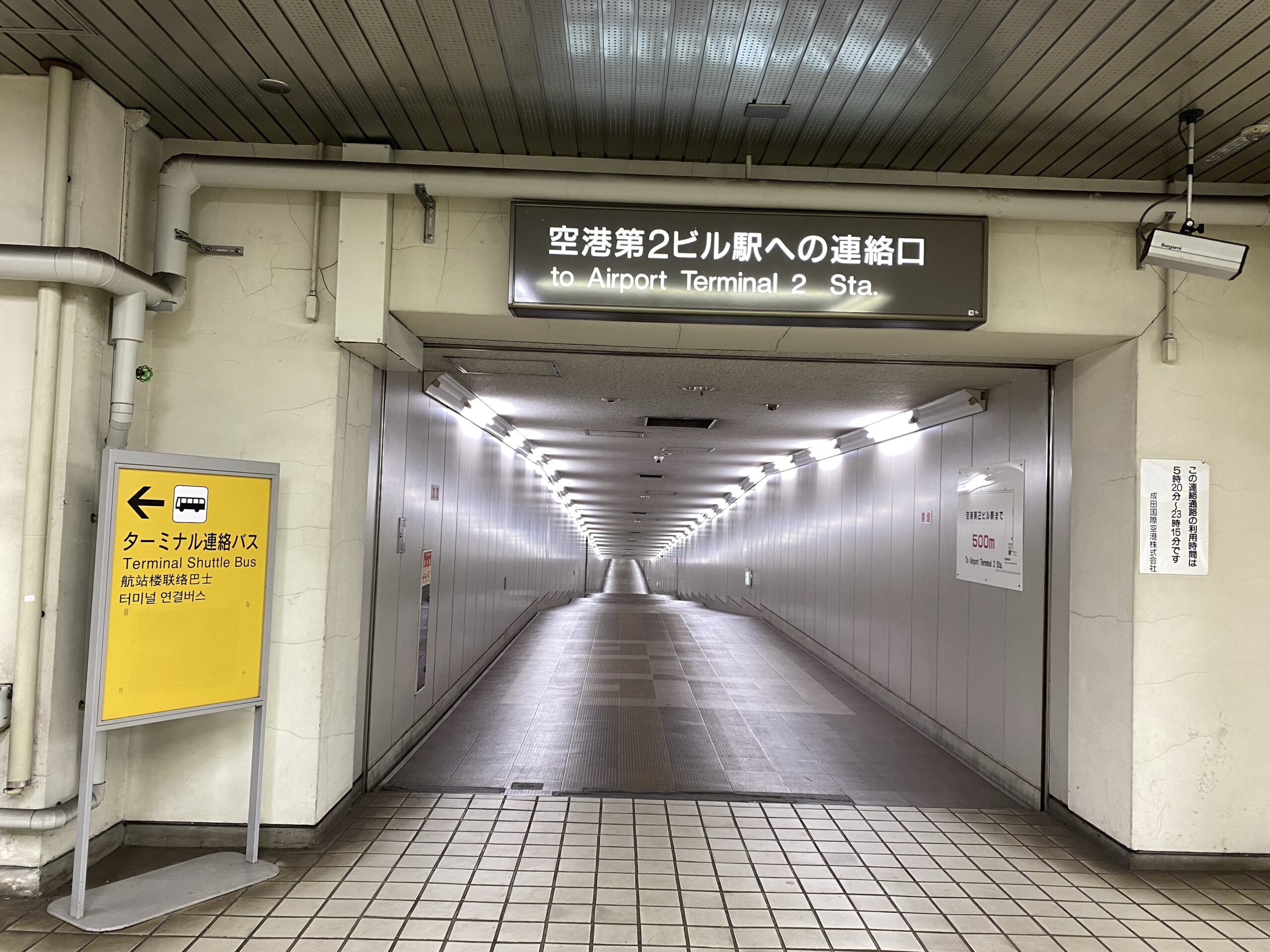When accessing Tokyo Narita Airport(NRT) by train, almost all people take the JR or Keisei lines and get off at Narita Airport Station or Narita Airport Terminal 2·3 Station, but there is another way to access Narita Airport by train.
That is to use Higashi-Narita Station on the Keisei Higashi-Narita Line. Like Narita Airport Station and Narita Airport Terminal 2·3 Station, Higashi-Narita Station is also located on the airport grounds, and Higashi-Narita Station used to be the real Narita Airport Station.
The Higashi-Narita Line extends from Keisei Narita Station, and when Narita Airport first opened, the station was used as Narita Airport Station, where the limited express “Skyliner” and other trains also arrived and departed. Later, when the Narita Shinkansen project* failed and the site was decided to be used by Keisei and JR, the Narita Airport access line was moved there and opened as Narita Airport Station and Narita Airport Terminal 2·3 Station (“Airport Terminal 2 Station” when it opened), which remains to the present day. *Narita Shinkansen was a planned Shinkansen line proposed to connect between Tokyo station and Narita Airport.
Therefore, even today, Higashi-Narita Station is connected to the Narita Airport terminal and can be used for access to Narita Airport. The only advantage is that the fares are a little cheaper.
| route | fare | time required (daytime) |
| Keisei Ueno—Narita Airport (via Keisei Sky Access line) | 1,257yen | 1 hour 4 minutes |
| Keisei Ueno—Narita Airport (via Keisei Main line) | 1,042yen | 1 hour 20 minutes |
| Keisei Ueno—Higashi-Narita | 972yen | 1hour 26 minutes |
As shown above, when heading from Keisei Ueno, the fare is 70 yen cheaper than via the Keisei Main Line. As for the time required, the ride time is not much different, but considering the distance from Higashi-Narita Station, it does not seem worth it. Of course, if you take the limited express “Skyliner”, you can reach Narita Airport in only 43 minutes.

Although not very practical, it may be instructive to learn about the history of the airport connecting station, which was once a Narita Airport Station and still serves as an active station today. It may also be fun to learn about the less rational shape of Narita Airport, which was built through a complicated process, and to explore unknown parts of the airport (places that are open to the public but unknown to us) that we usually use.
This time, I took the Keisei Higashi-Narita Line to Higashi-Narita Station and walked to Narita Airport Terminal 2. On the way back, I took a free terminal connecting bus from Terminal 2 back to Higashi-Narita Station.
First I came to Keisei Narita Station. The Keisei Line was originally built to provide access to Naritasan Shinsho-ji Temple(成田山新勝寺), and especially during the New Year, the station is crowded with many people heading to the temple.
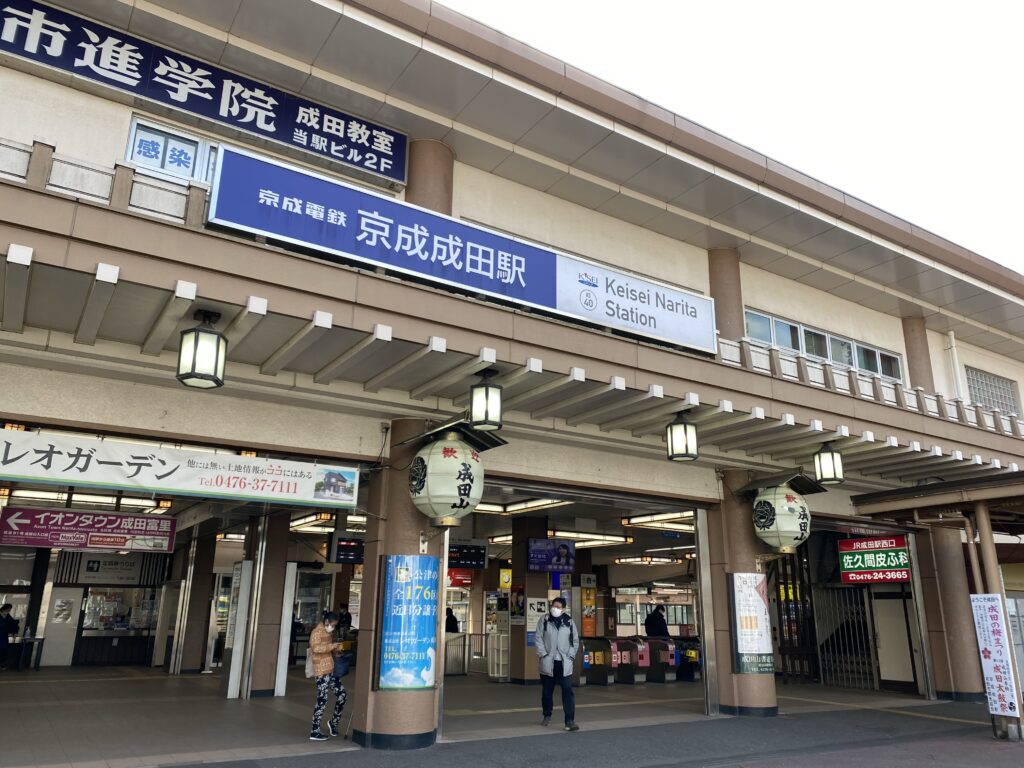
You can take a regular train bound for Higashi-Narita/Shibayama Chiyoda, which operates directly with Shibayama Railway, another line extending from Higashi-Narita Station. The train used is a Keisei Series 3500. It operates every 40 minutes during the daytime.
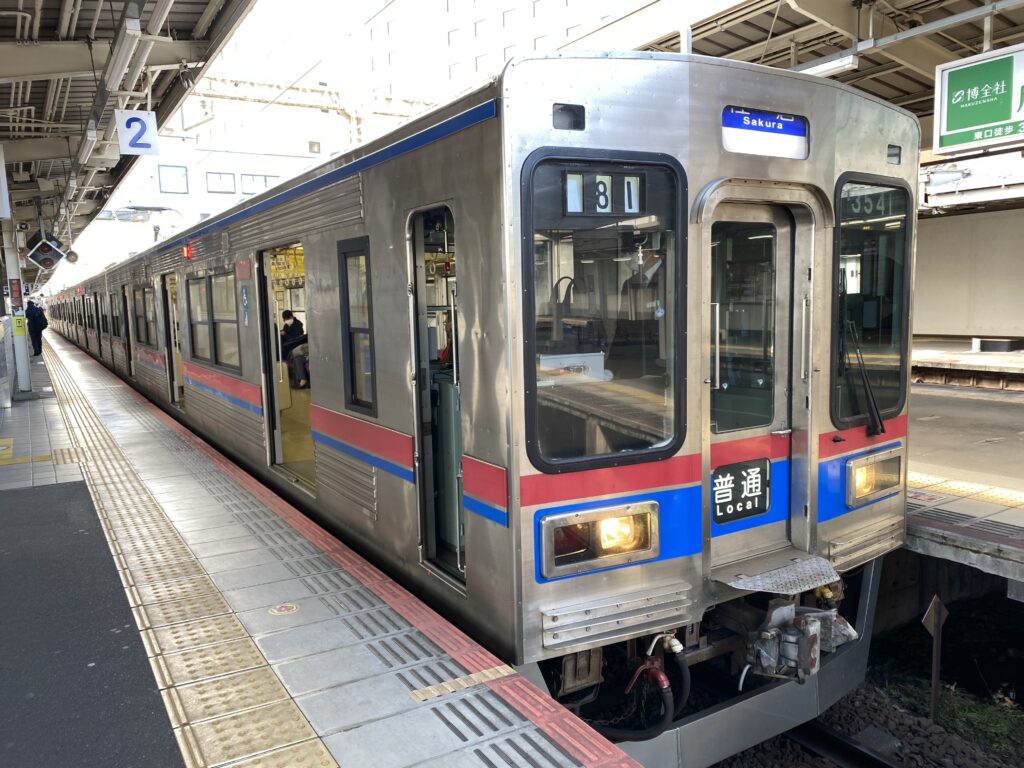
Higashi-Narita Line trains depart from Track No. 5. There is also a direct train from the Keisei Main Line.
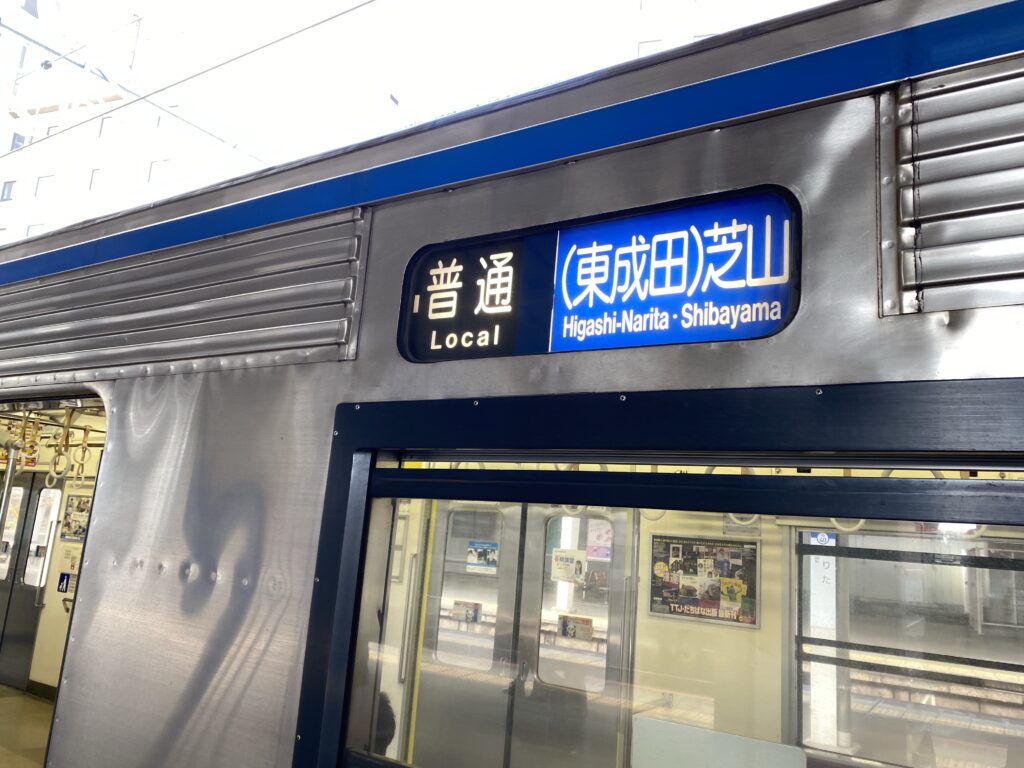
It takes about 6 minutes to arrive at Higashi-Narita Station.

Higashi-Narita Station has an abandoned atmosphere despite being an active station. Two of the four tracks are closed, which once served as platforms for limited express trains. The “Skyliner” used to arrive and depart from here.
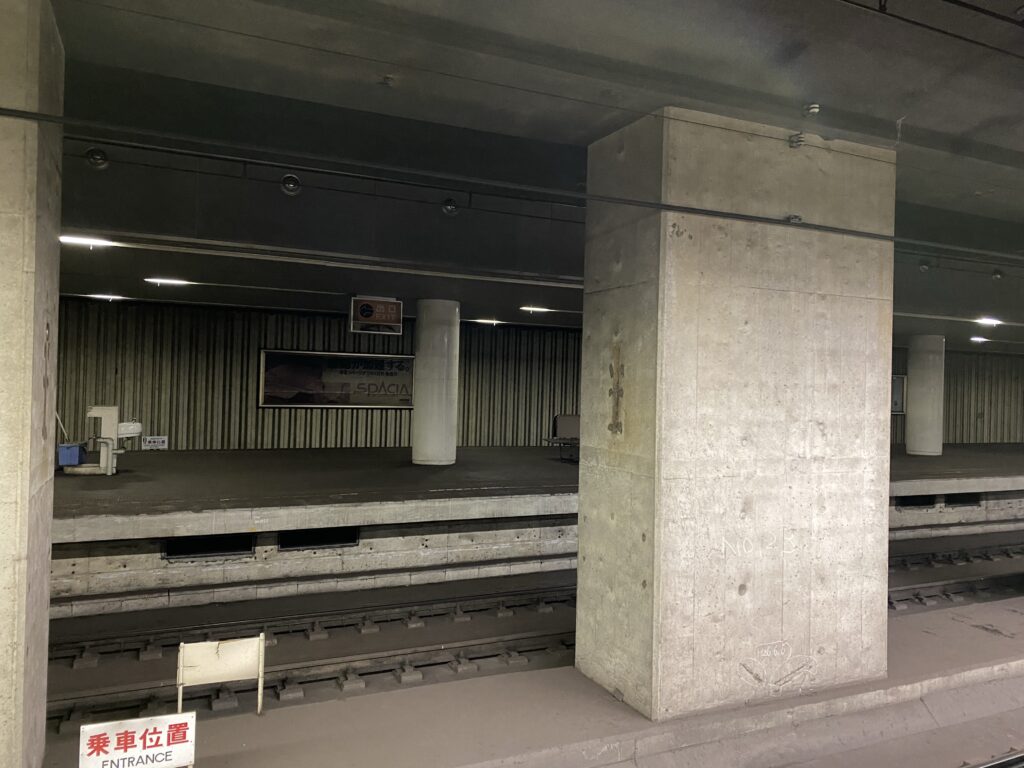
The former “Narita Airport” station name sign still remains when looking at the unused platform.
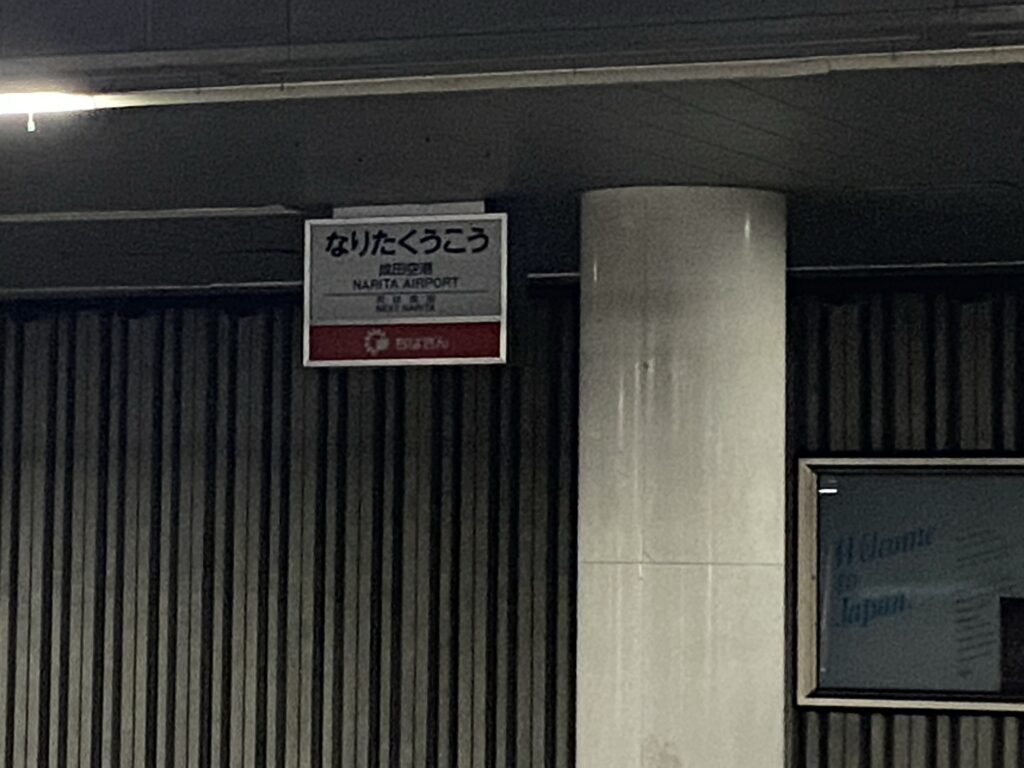
To my surprise, there was also an advertisement for Tobu Railway’s express train, Spacia! It was the most advanced express train of the time.
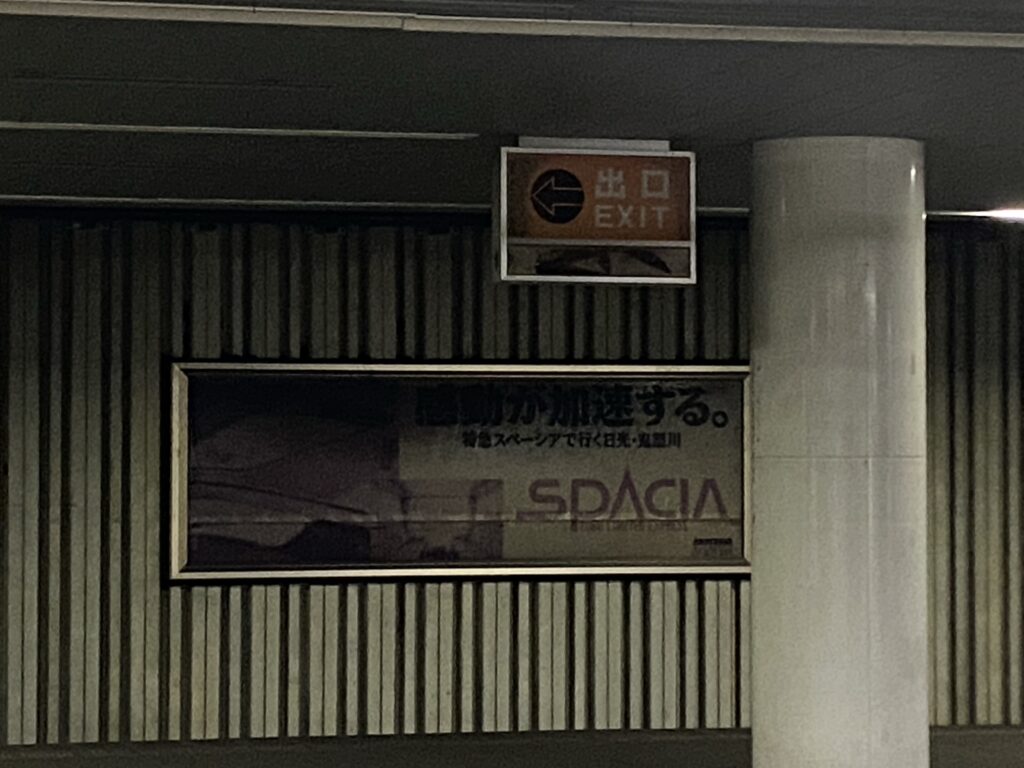
One side of the escalator has been removed and the other is for climbing only. It moves with a loud rattling sound.

I went out to the concourse. The walls are bare concrete and look a bit cold.

There is also the site of a once-operating restaurant. The station is generally inorganic and dimly lit, and you cannot help but be reminded of the former Communist bloc.
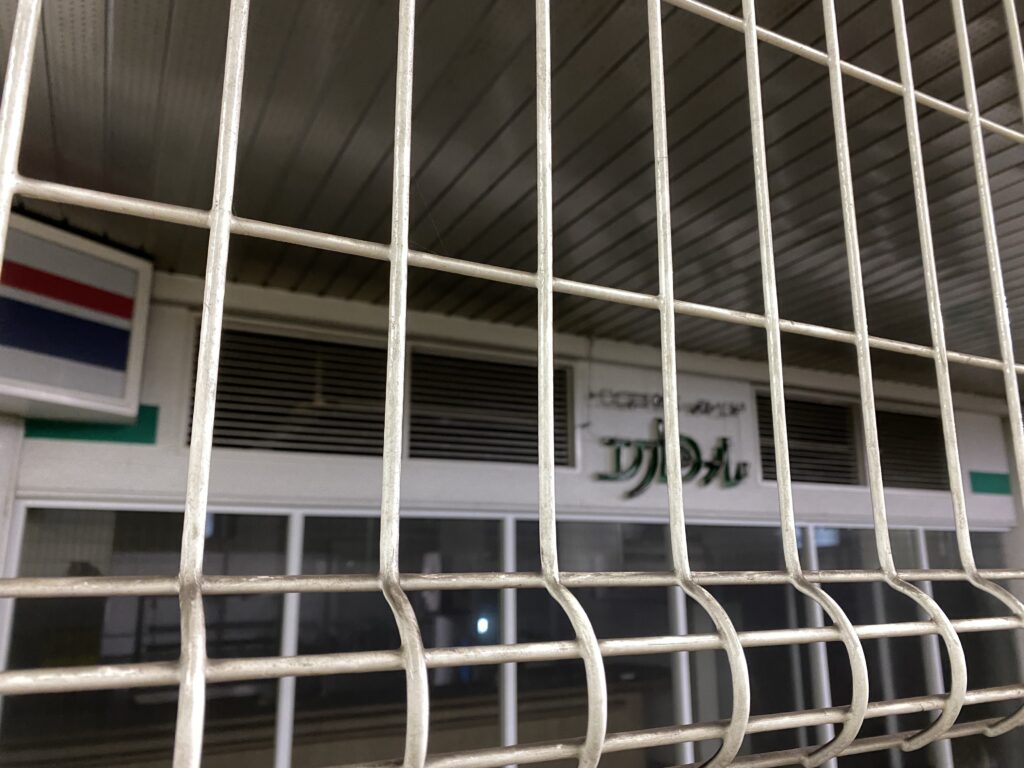
A concourse to the limited express platform would have once been connected from here, but it is now sealed off.
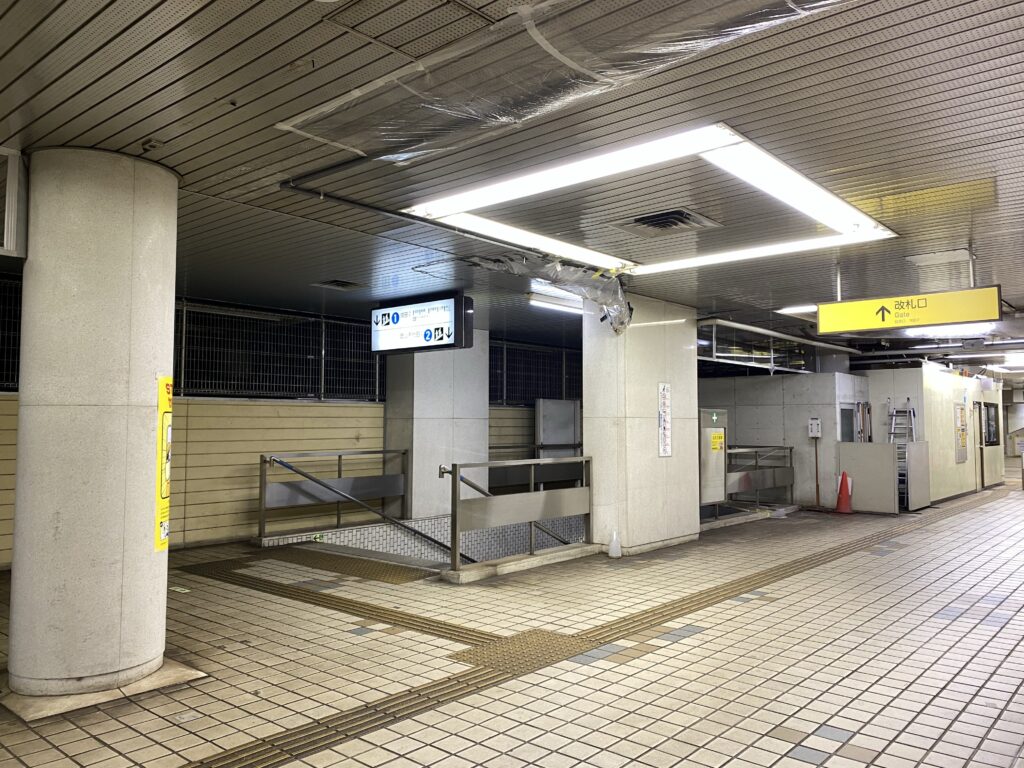
The ticket gates are relatively small for an airport station. But there probably would have been ticket gates on the right side as well.

There is a large space in front of the ticket gates, reminding us that travelers with a lot of luggage used to fill this area.
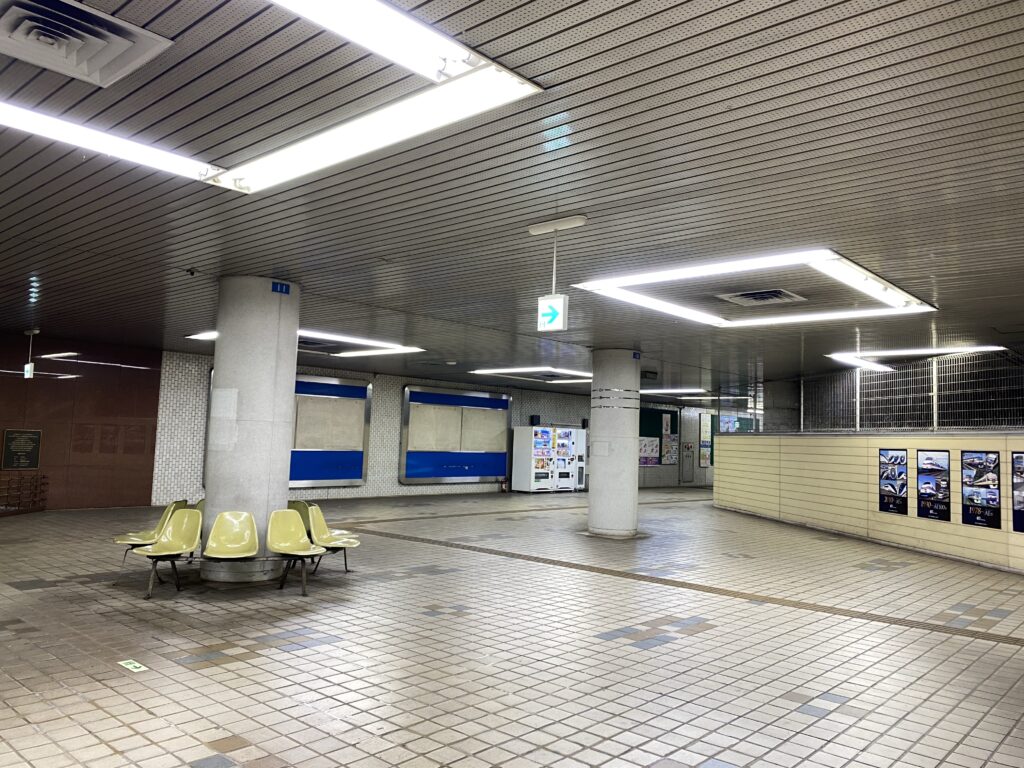
Next to the ticket machines, a handwritten history of this station was written. The illustrations pasted above are of the first and second Skyliners.
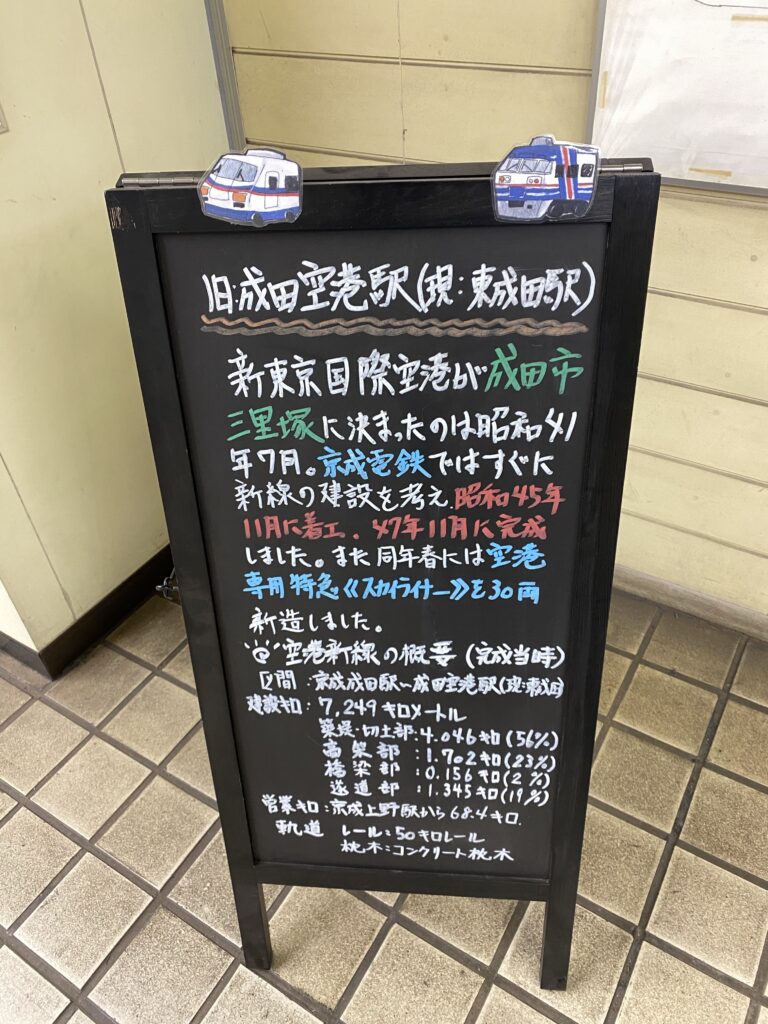
The walls have relief work on ceramic panels. It represents a banquet scene from the Heian period.

On the right side of the ticket gates, there is a connecting walkway to Narita Airport Terminal 2·3 Station. This means you can walk to Narita Airport Terminal 2.
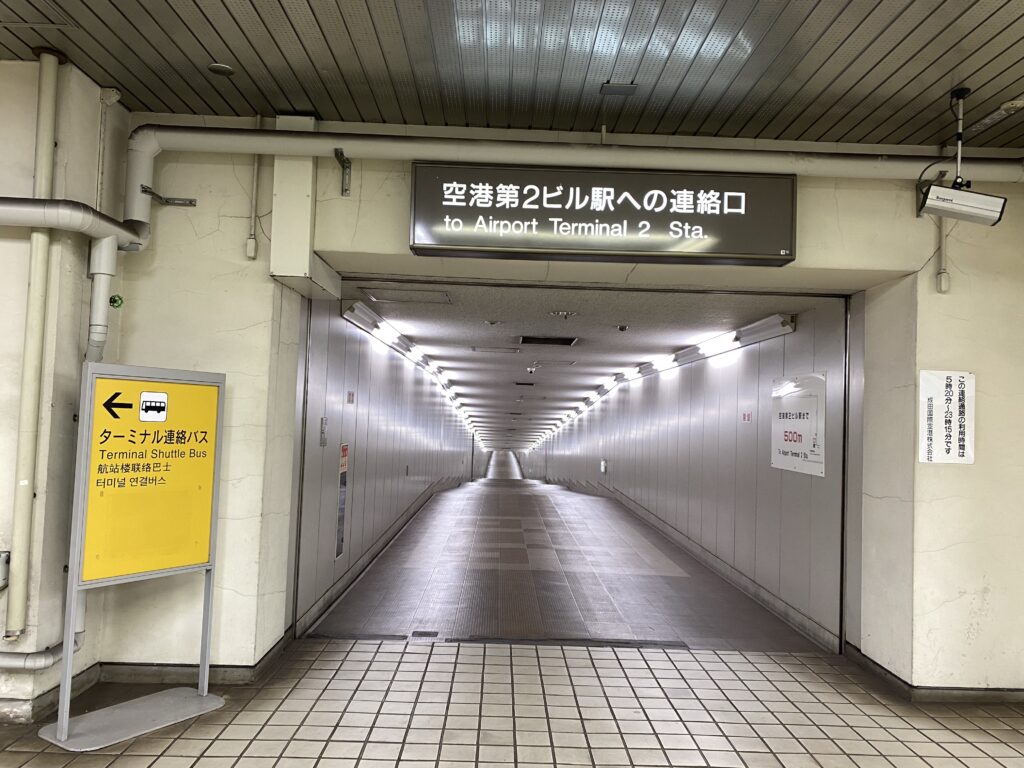
In addition, according to the information plate, although there is no connecting way, you can walk on the ground to Terminals 1 and 3 as well.
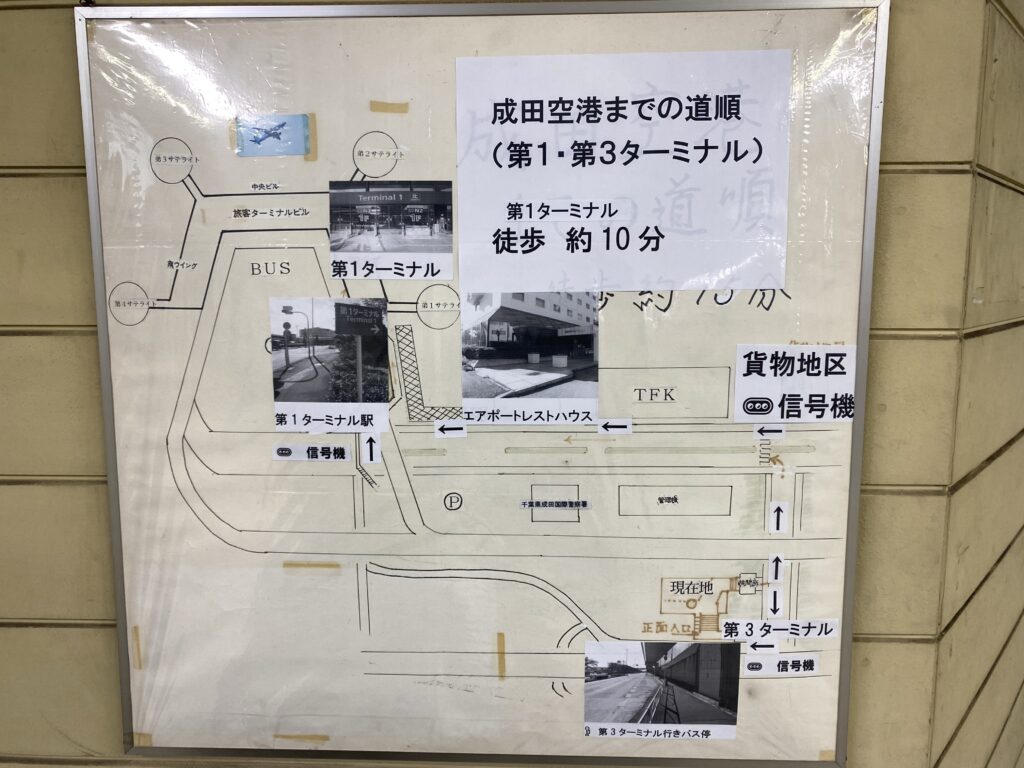
Let’s explore the station first. I decided to go toward the terminal connecting bus stop.
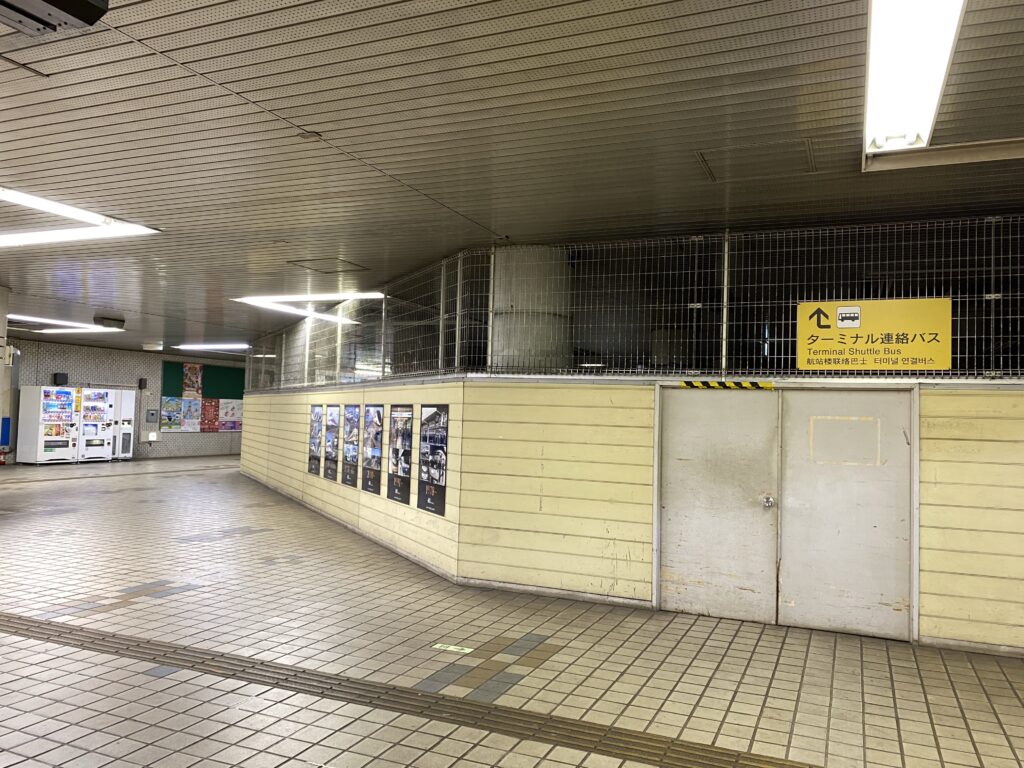
You will pass through a dimly lit corridor.

After passing through the corridor, you will see a building with a security guard, through which you will go outside. It is a bit confusing for a moment as if to say, “Are ordinary people really allowed to be here? It is a bit awkward. But don’t worry.
It seems to be a further walk to the connecting bus stop.

Exit to the left and you will find yourself in the cargo area. A huge Air Hong Kong cargo plane appeared in front of me, which made me realize that I was in the midst of the airport.
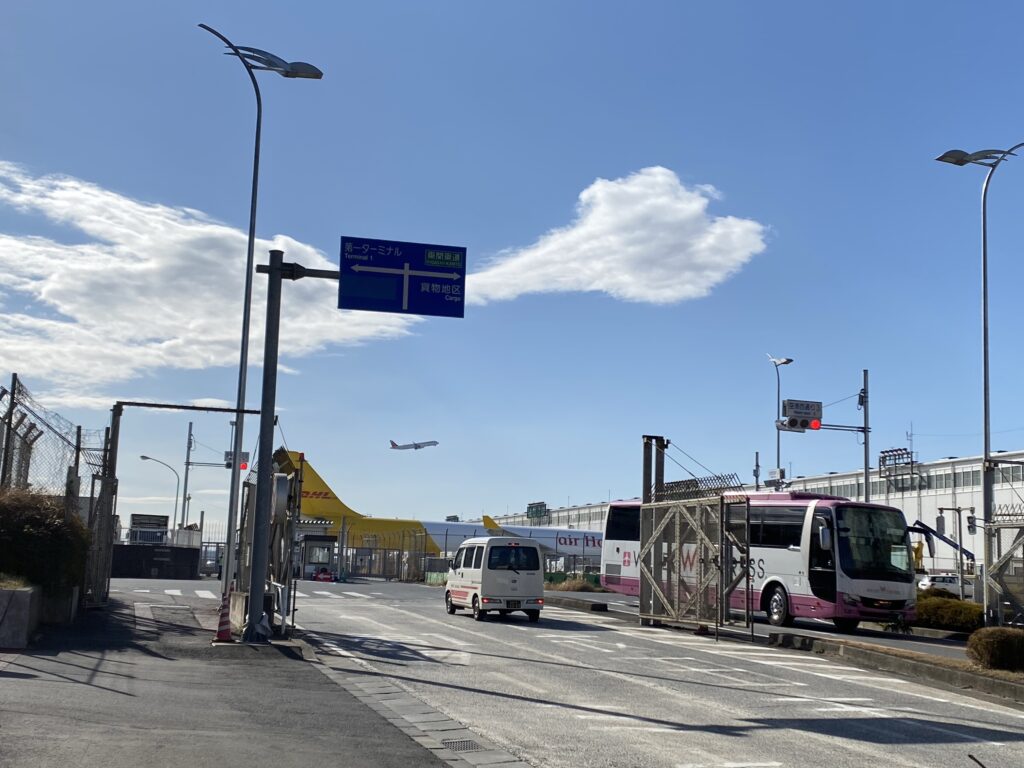
Let’s go back to the way we came. It is hard to believe that this is the entrance to the station. This is the entrance to Higashi-Narita Station.
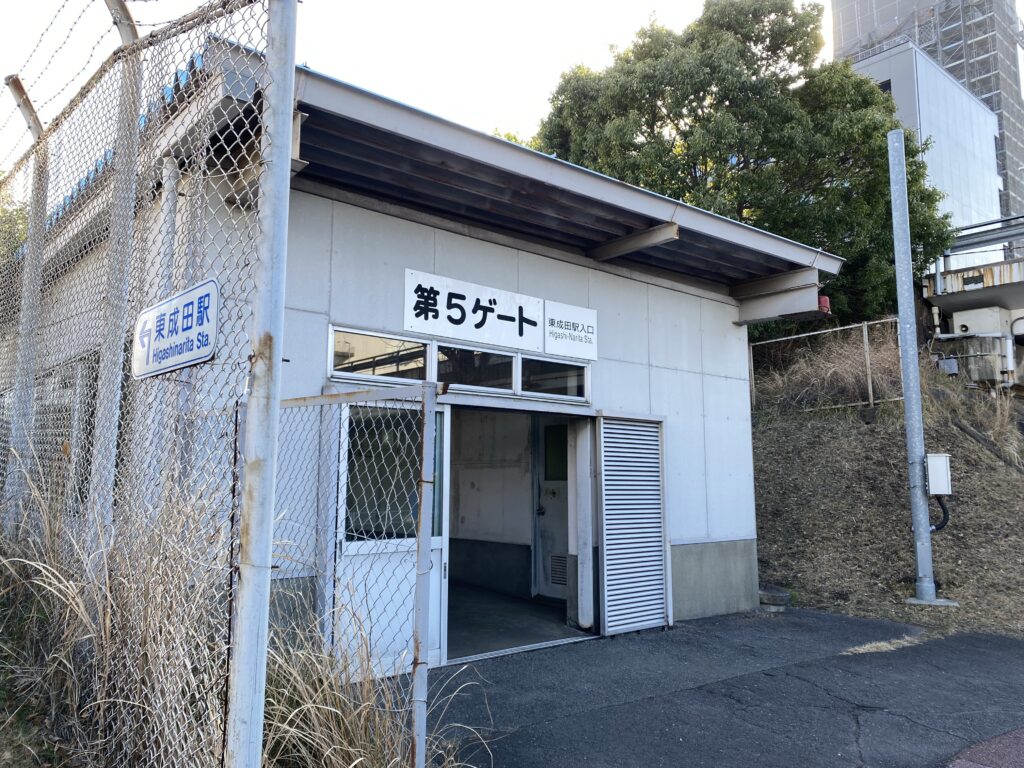
Police officers with drug-sniffing dogs frequently come and go around the station and on the premises. I have passed them many times.
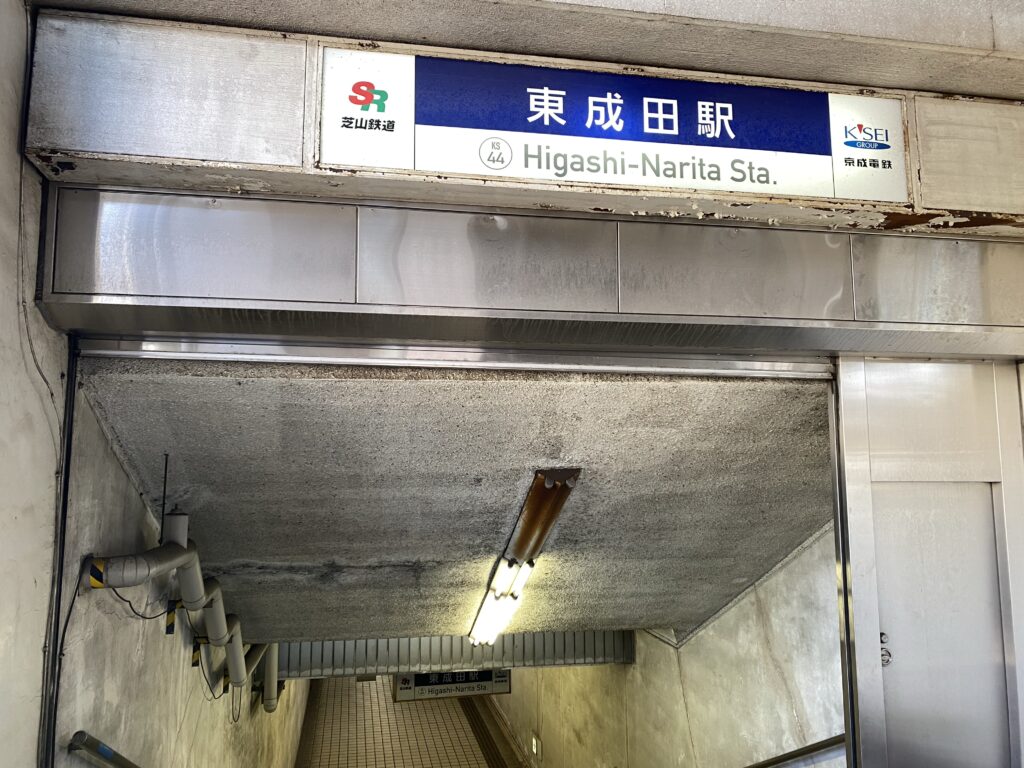
I decided to climb up another doorway as well. It is fun to look at old ads too.
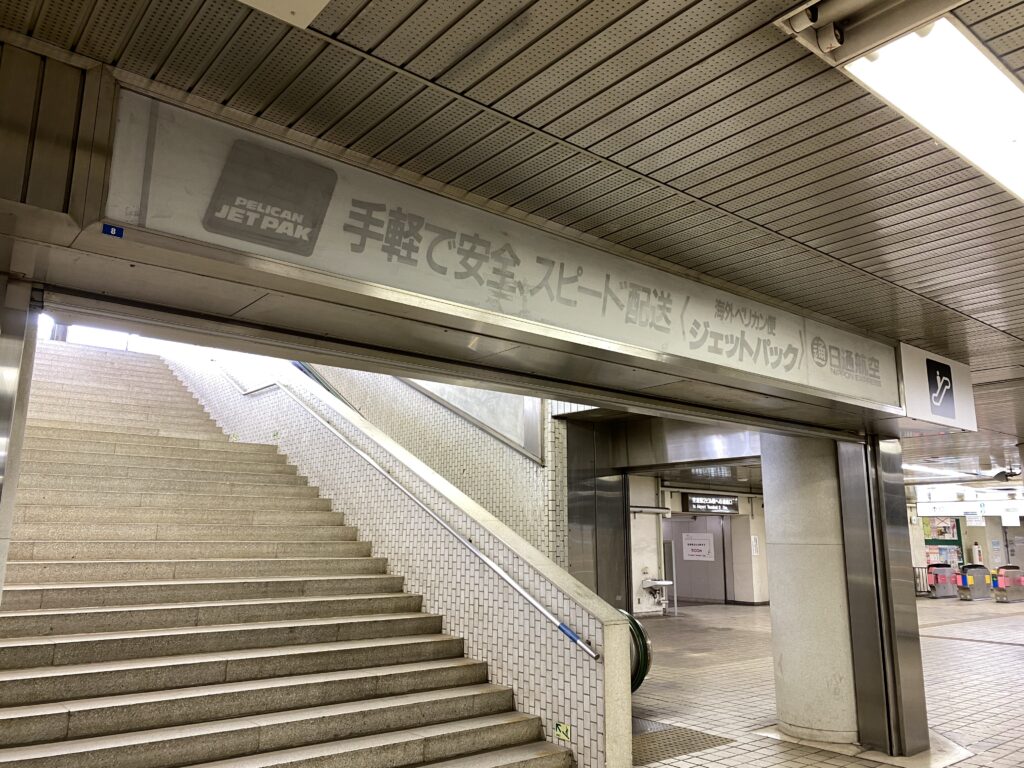
This appears to have originally been the main entrance of the station. In the past, people used to take a connecting bus from here to the terminals. Therefore, it seems that limousine buses had an advantage in terms of ease of access.
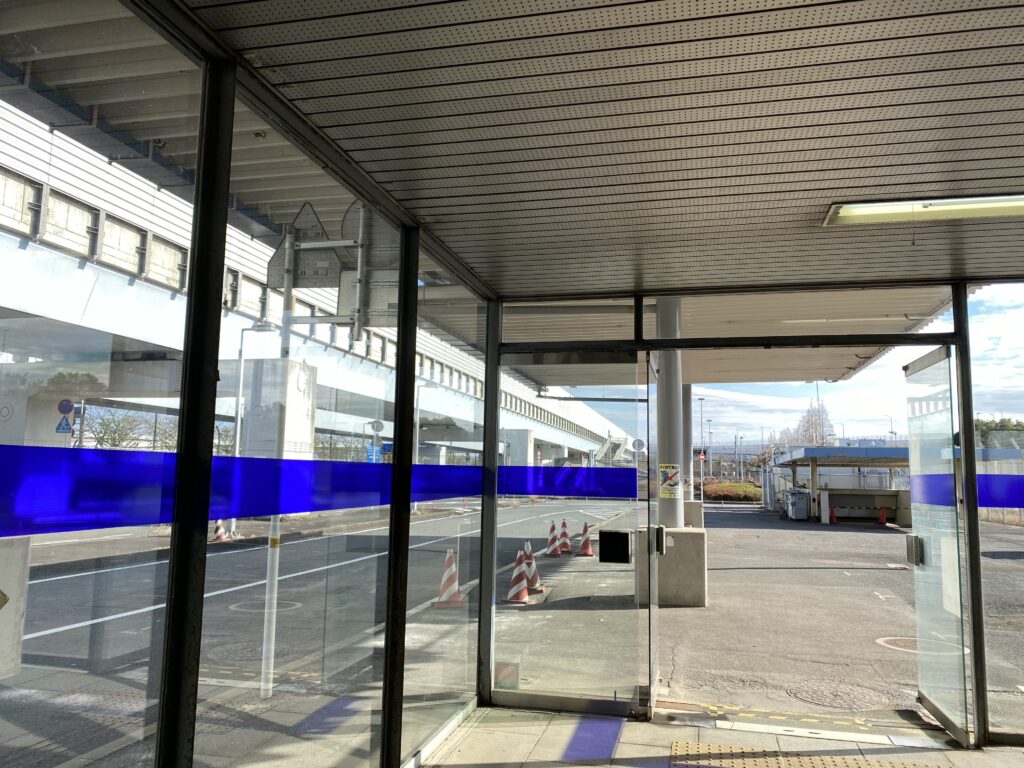
Pictures of the former Skyliners were displayed. These first and second generations of Skyliners used to arrive and depart from this Higashi-Narita Station(Narita Airport Station at that time).

Return to the previous entrance and finally walk along the connecting walkway to the terminal. Between here and the Airport Terminal 2 station, there are 500 meters to go.
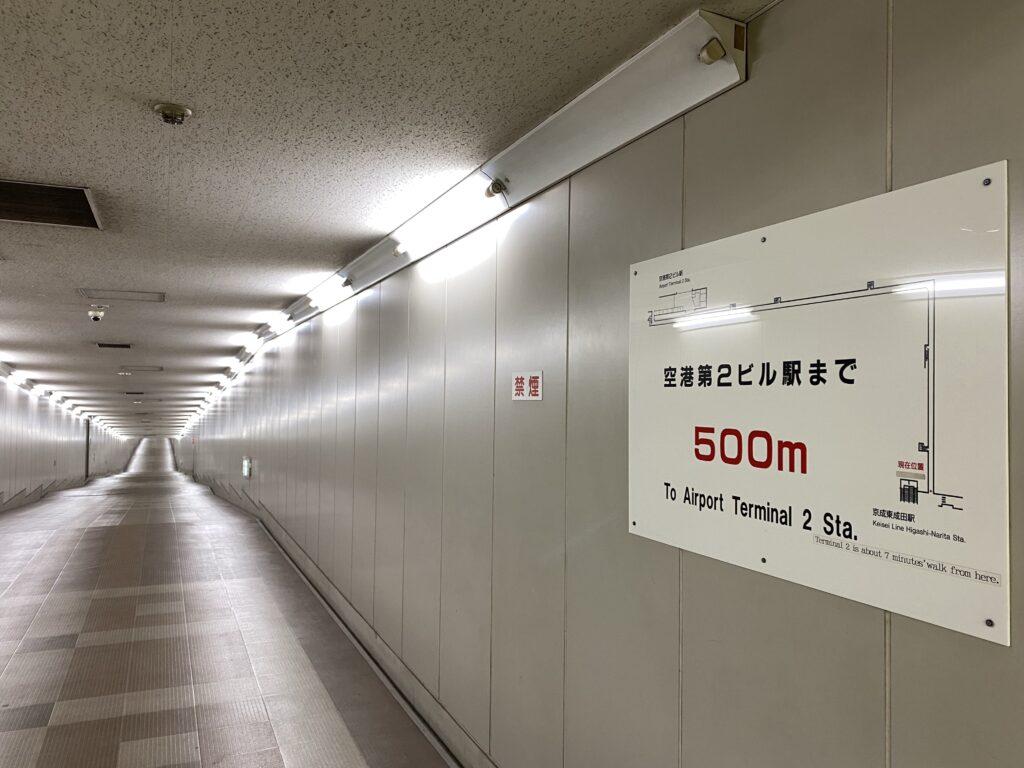
Continue down the empty corridor. It is a straight line but seems to be slightly up and down.

You will proceed through a space where no one is in sight, no sound is heard, and there is an excessive amount of surveillance cameras in the dimly lit corridors. It’s the kind of spot you rarely get to experience. You feel like you are doing something a little bad. Although inorganic, the occasional posters reassure you. These are posters of Shibayama Railway and the surrounding municipalities.
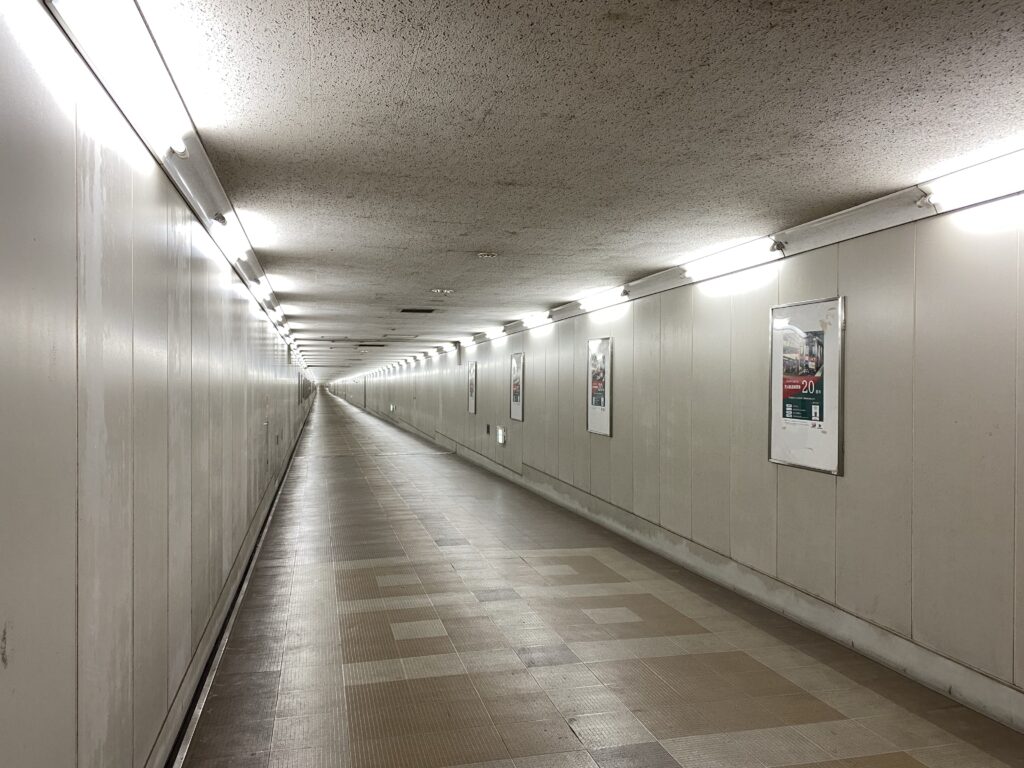
I found a map. You can see that Higashi-Narita Station is located between Narita Airport Station and Narita Airport Terminal 2·3 Station. It makes sense that Narita Airport Terminal 2·3 Station is closer and is connected by an underground passage.
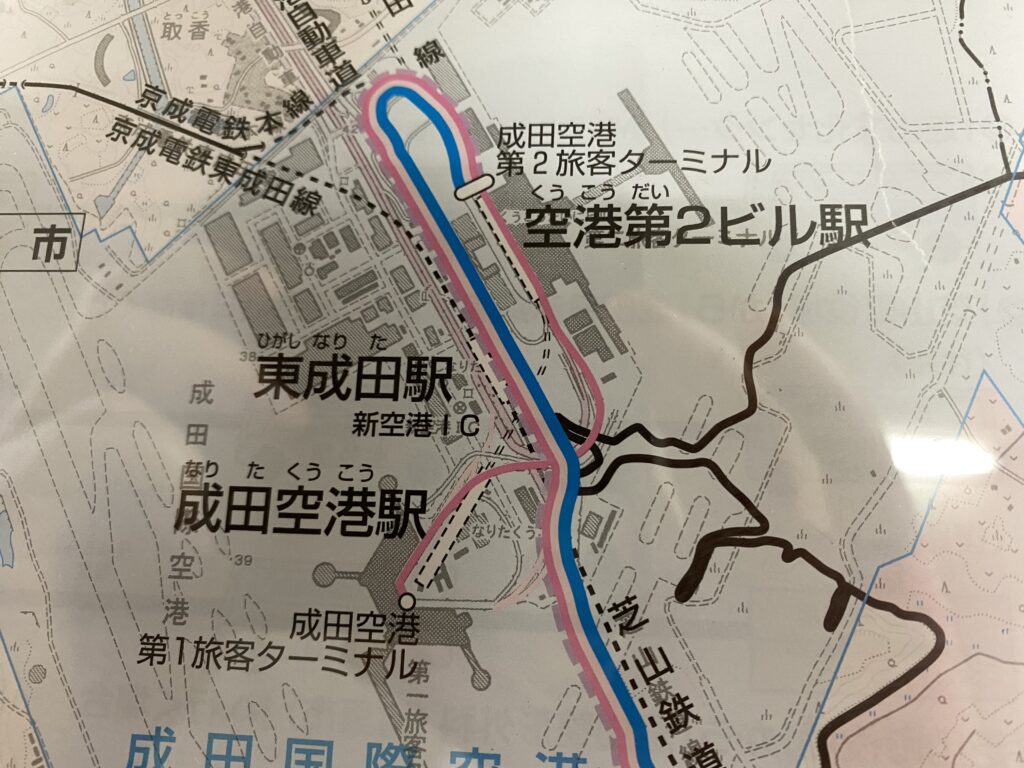
Suddenly, I began to hear the sound of people talking and bustling. I turned the corner and saw the exit.

You will arrive at Narita Airport Terminal 2·3 Station abruptly. It was connected to the front of the Keisei line ticket gate. In the end, I didn’t pass anyone. I felt a sense of relief when I came out to a place where many tourists were happily coming and going.
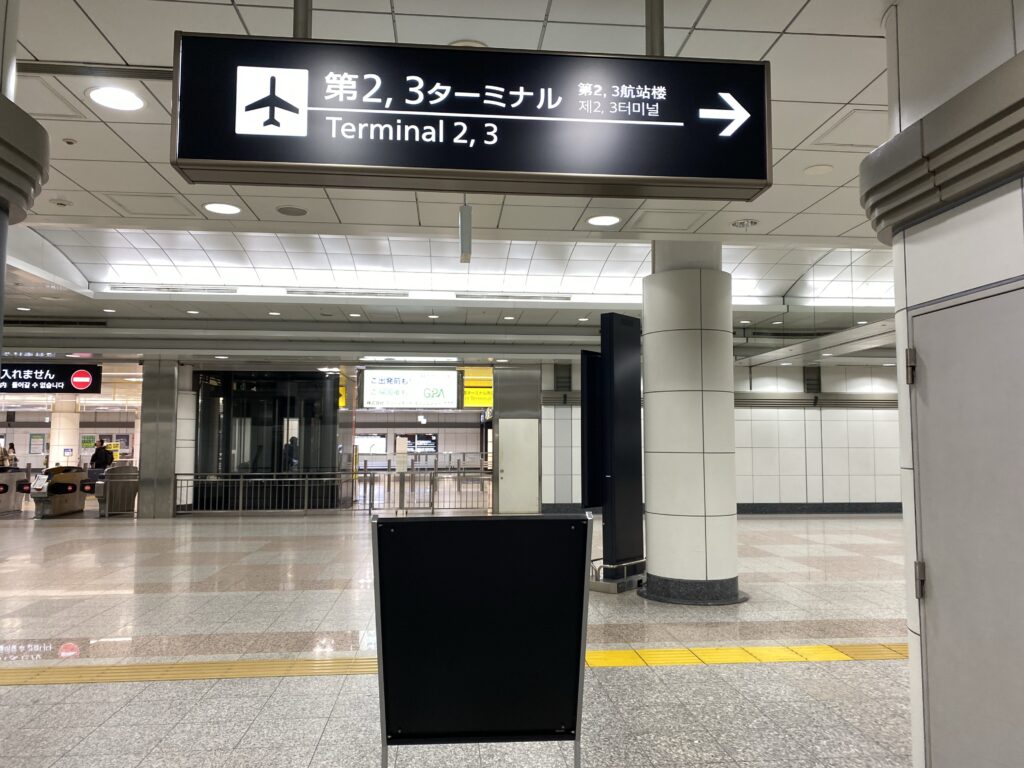
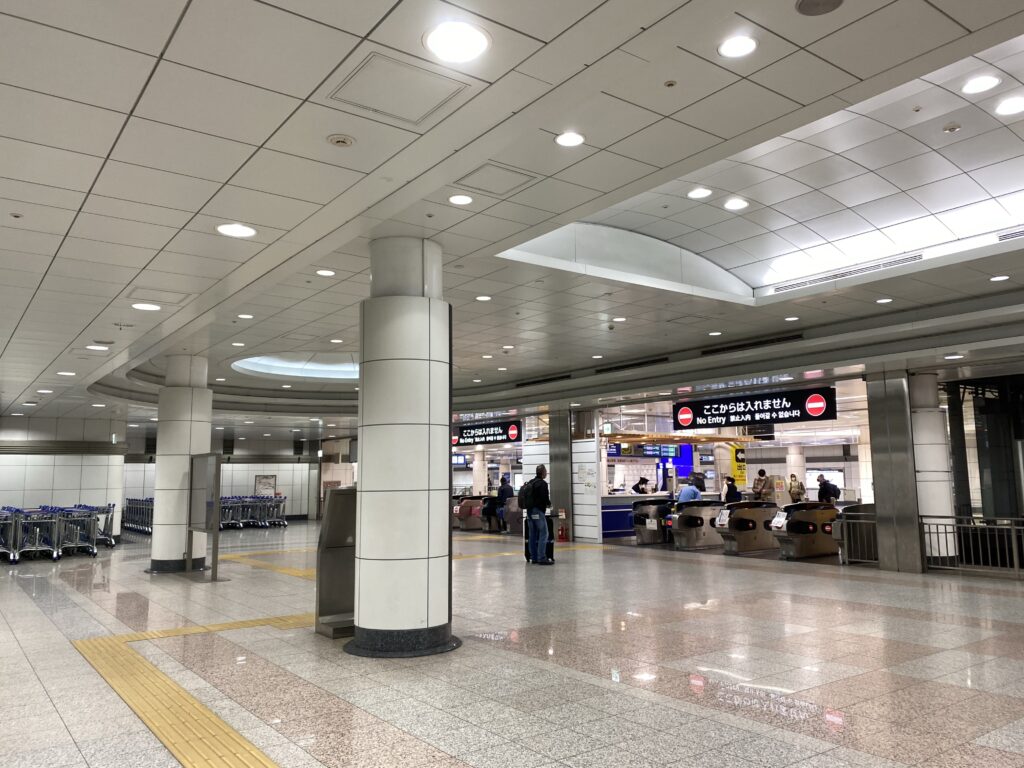
Even though the entrance to the passage is clearly marked as a passage to Higashi-Narita Station, it feels like a staff-only passage or an emergency exit because no one uses it.
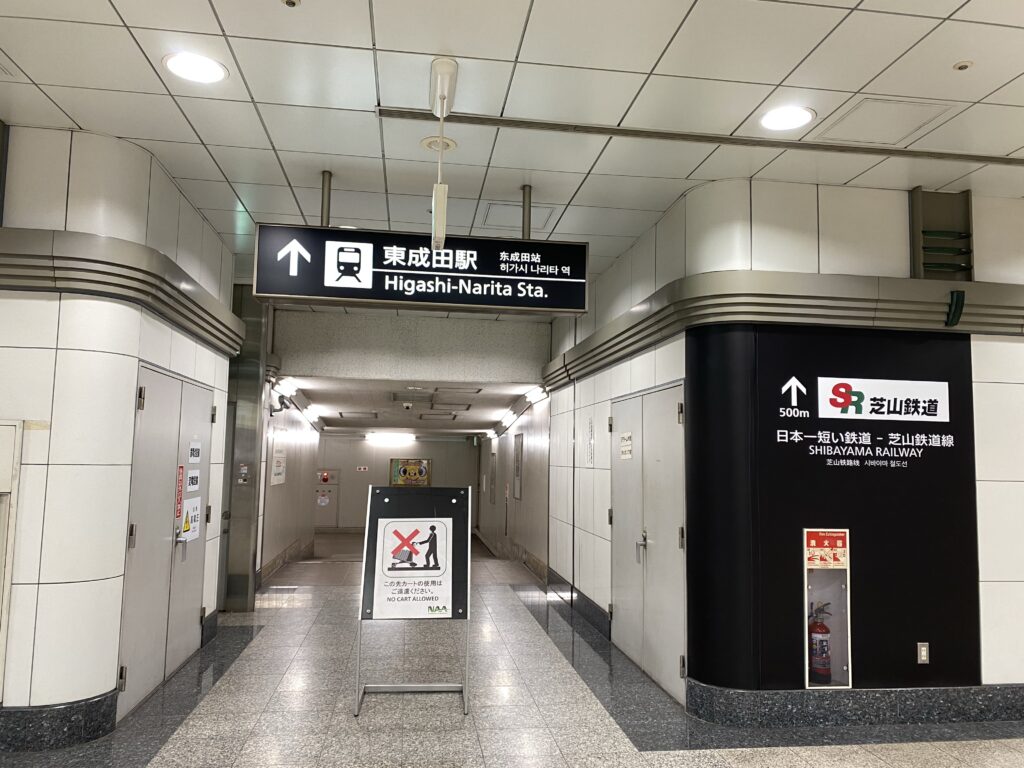
the view before me is so familiar. I have been to this place many times. But since I arrived there suddenly, it feels strange.
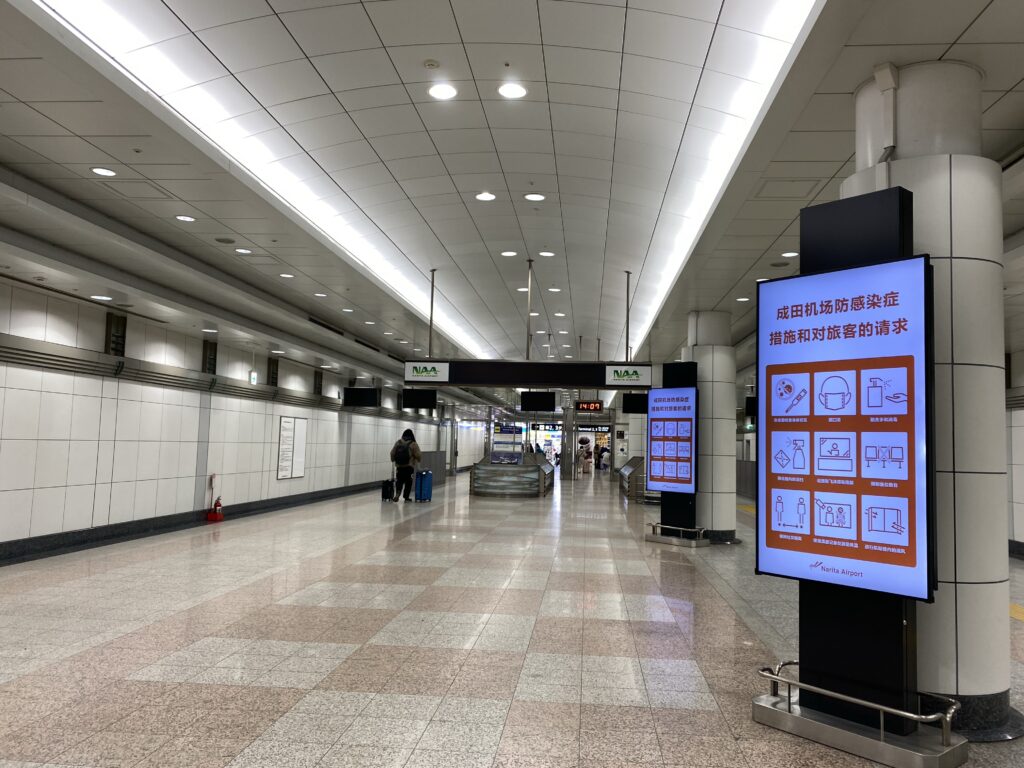
Once I arrived at Terminal 2, it was just like any other day. I spent some time watching the departing flights.
Now we will return to Higashi-Narita Station by the free terminal connecting bus. The bus goes in this order: Terminal 2 → Terminal 1 → Higashi-Narita Station → Terminal 3 → Terminal 2.
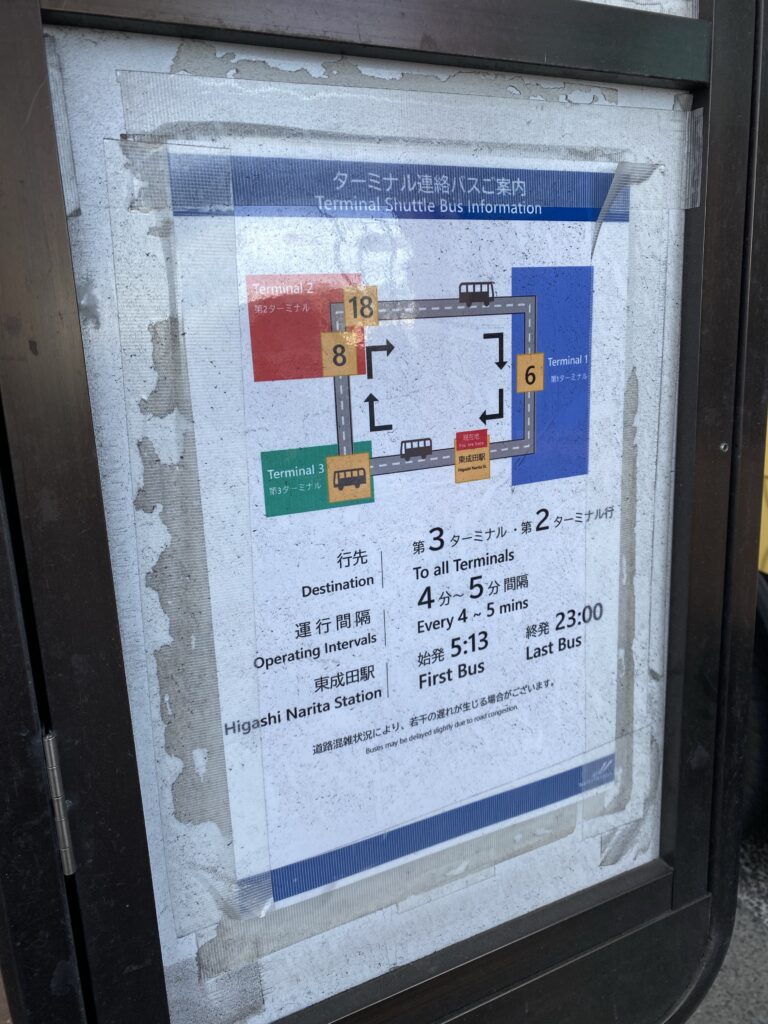
Board the bus from Terminal 2, #18. The car was filled with tourists.
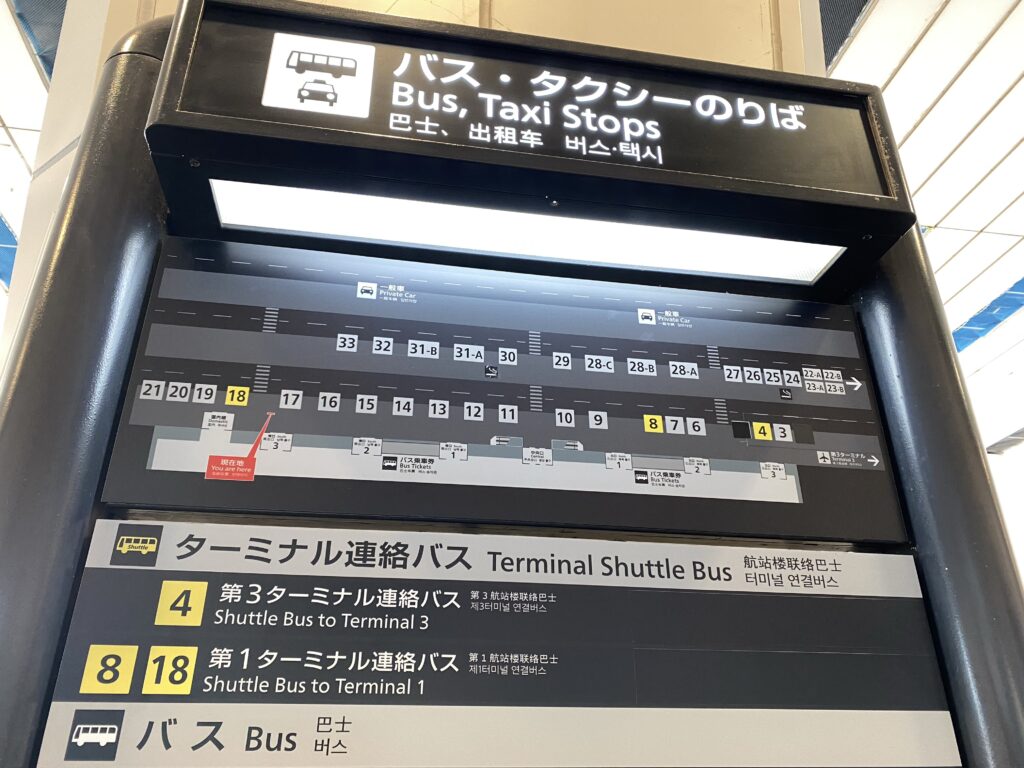

The first stop is Terminal 1. Next is the Higashi-Narita Station. Since there are usually few passengers at the Higashi-Narita Station bus stop, you must press the “get off” button to get off the bus. If you do not press the button, the bus will pass by.
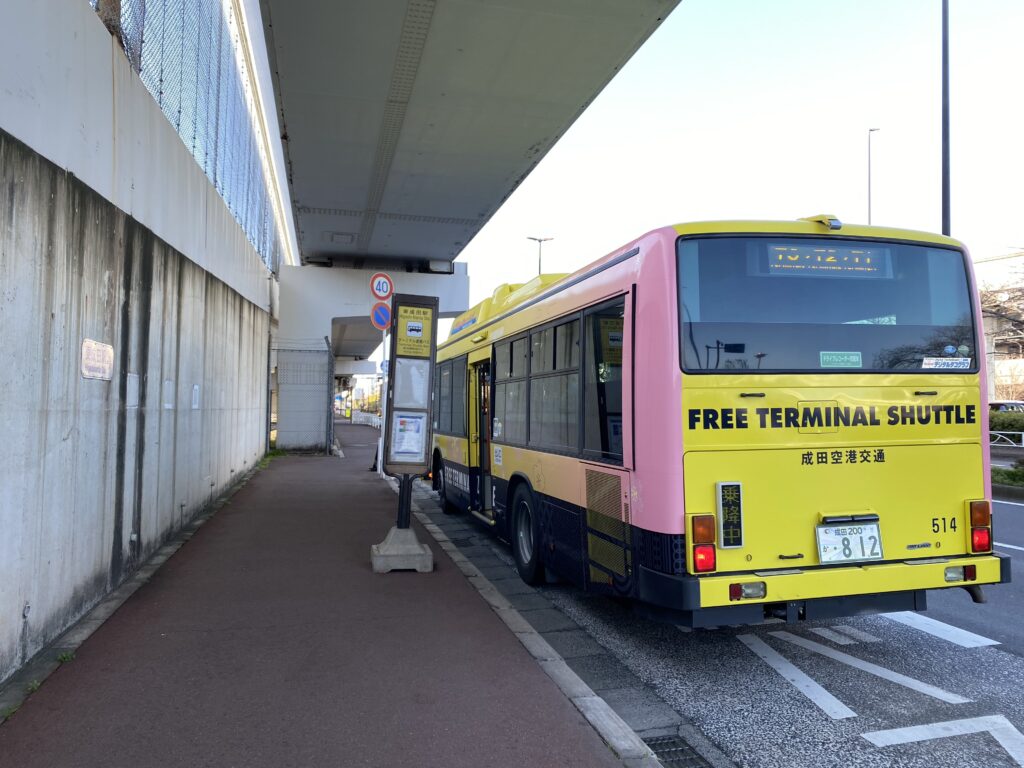
Naturally, I was the only one who got off the bus. I went back to the entrance gate of Higashi-Narita Station.
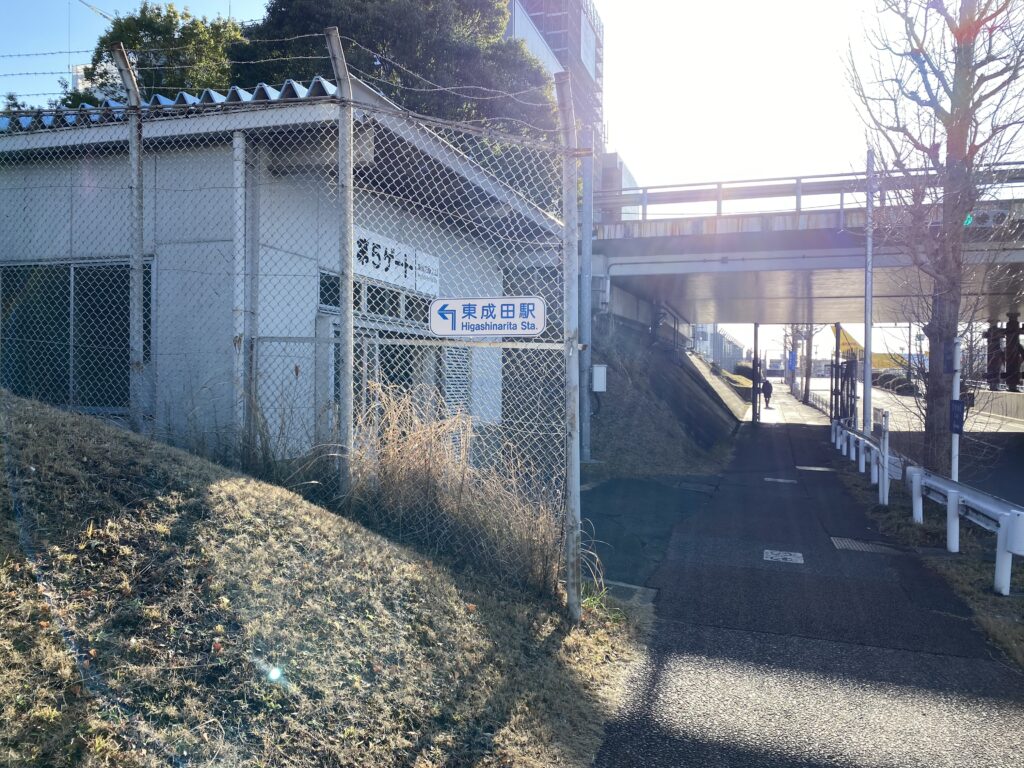
I returned to Higashi-Narita Station under the watchful eye of the security guards and went back to Keisei Narita Station.
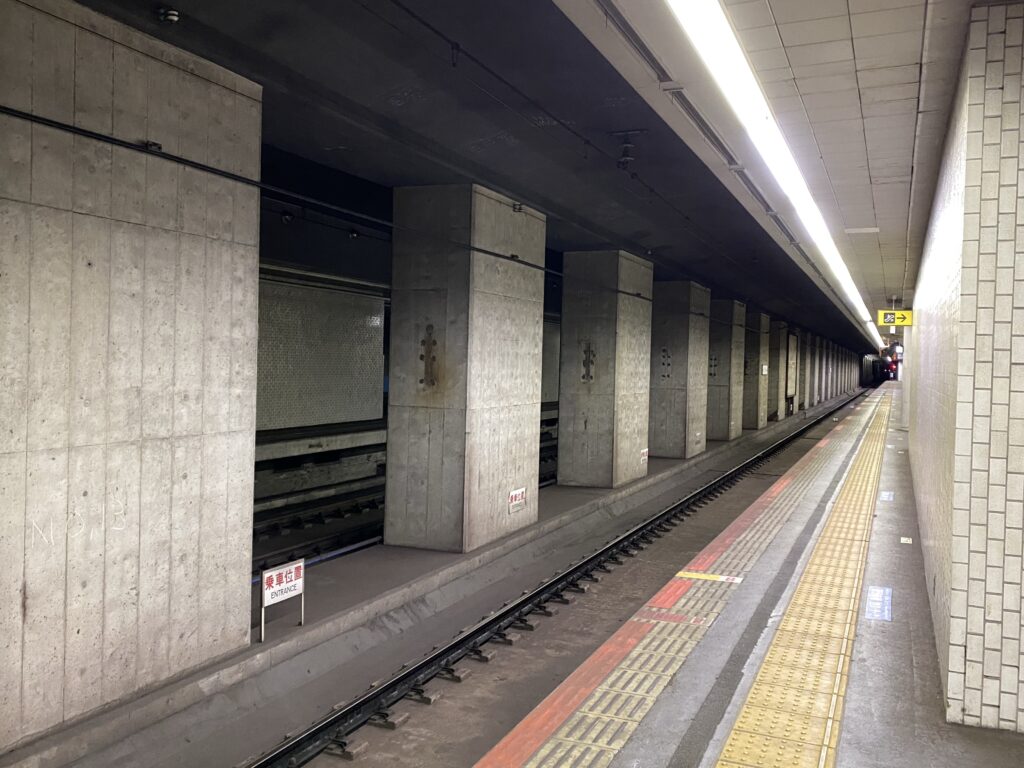
Higashi-Narita Station is rarely known nor used by travelers but is used by airport personnel for commuting. Yet, during the daytime when I visited, there was no one there except for security guards and police officers. It was a secluded and, I hesitate to put it this way, abandoned area within Narita Airport.
We encourage you to explore Higashi-Narita Station before your flight at Narita Airport or when you are in transit. It is also fun to go from Tokyo to Narita Airport via Higashi-Narita Station if you do not have large luggage.
